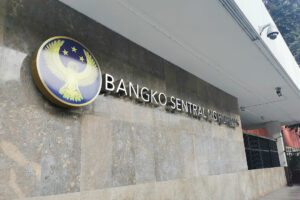CENTRAL BANKS must calibrate their policies to ensure price stability with a possible resurgence in inflation, the ASEAN+3 Macroeconomic Research Office (AMRO) said.
“It is still too early to claim victory over inflation in the region. Upside risks to inflation remain. A tight labor market and the lagged effects of high inflation could push up wages and in turn spur inflation. The recent uptick in commodity prices poses another risk that could keep inflation high for longer,” it said in its Asean+3 Financial Stability Report 2023.
Headline inflation in the Philippines eased further to 4.1% in November, against the 4.9% posted in October and 8% a year earlier.
However, this marked the 20th straight month of inflation breaching the central bank’s 2-4% target band.
“The pace of this inflation has been differentiated across economies with some countries still seeing inflation picking up recently. Some are seeing inflation still above target and some are seeing sticky core inflation,” AMRO Group Head and Lead Economist Kevin Cheng said in a webinar on Tuesday.
He said this could complicate central bank efforts to “safeguard financial stability while maintaining price stability.”
AMRO said that inflationary pressures could come from currency fluctuations, a spike in global commodity prices, geopolitical tensions, and supply constraints.
“Such a scenario might compel central banks to either intensify or maintain their restrictive monetary policies,” it added.
The Bangko Sentral ng Pilipinas kept its benchmark interest rate steady at a 16-year high of 6.5% at its latest policy meeting. It voted for a 25-basis-point (bp) off-cycle rate hike in October.
The central bank has raised borrowing costs by a cumulative 450 bps since it began its monetary tightening cycle.
AMRO recommended that central banks “carefully calibrate” their policies and strategies based on domestic and external conditions.
“First, central banks should continue to focus on maintaining price stability. To this end, a strong commitment from central banks is a strong force to anchor inflation expectations,” Mr. Cheng added.
“Despite market expectations that the Fed’s tightening phase is near an end, the risk remains that unanticipated inflation shocks could compel the Fed to raise and maintain higher policy rates longer than expected,” AMRO added. — Luisa Maria Jacinta C. Jocson
